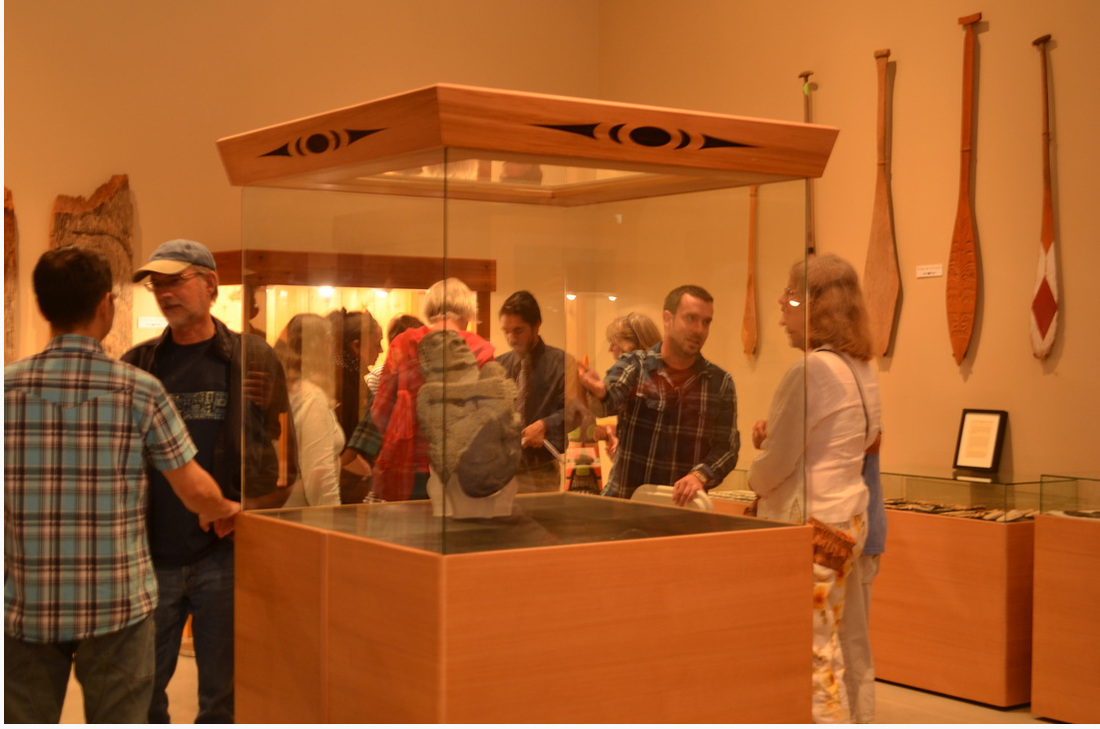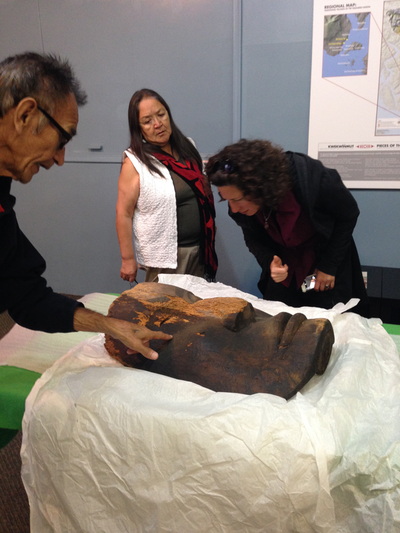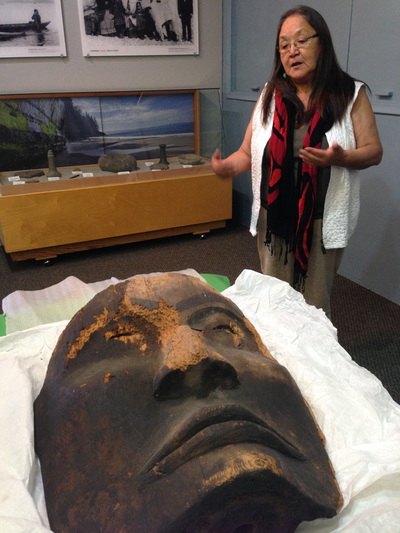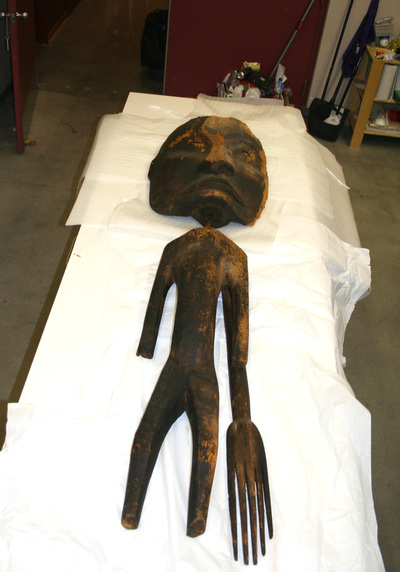Winegarden Waterfront Park is a charming flower garden park that holds a small but conspicuous spot on the Gibsons sea walk. Although John and Gertie Corlett owned and managed apartments at this location for almost fifty years, the archival photographic records of the Sunshine Coast Museum and Archives always referrers to the Corlett apartments as the former Le Page Glue factory. Being new at the Sunshine Coast, I assumed that the Le Page Glue Factory must have been an integral industrial institution in the town of Gibsons for quite some time considering that reference to the factory overshadowed mention to any other use for the building over seventy years. Instead I found that the factory, completed in 1898 and closed in 1901, was barely in production for a year.
Adding to the mystery was several references to the Gibson factory owner as Fred Le Page, nephew to the founder of the glue industry. When I contacted the great great granddaughter and historian of William Nelson LePage, the original founder of Le Page Glue, she replied that she owns one box of liquid glue labeled F. Le Page, but being that there had never been a Fred in the family and seeing there were many copycats and frauds at the time as well as legal battles over ownership and rights, she had always gone under the assumption that this was another fraud.
At the end of the day there are still gaps in the secondary source accounts of who started and what ended the Le Page Glue Factory in Gibsons and we are left with an unexceptional piece of wood covered on one side in a thick layer of glue made from local dogfish livers. This being our only primary source of evidence which, according to the description given in our archives, may be the last working trace of a glue factory mixing vat.
References
Keller, B., & Leslie, R. M. (2009). Bright seas, pioneer spirits: A history of the sunshine coast. Surrey,
B.C.: TouchWood Editions.
Le page, V. (Ed.). (n.d.). ONE OF EARLIEST OF BIG ADVERTISERS - W.N. LE PAGE, WHOSE
FUNERAL WAS HELD TODAY, ONCE A CAPTAIN OF INDUSTRY. Retrieved November 6, 2014, from http://www.thecakelady.ca/lepagesglue/history2.html
Peterson, L. R. (1979). The Gibson's landing story. Toronto: PMA Books.
Wreckers Demolish Old Landmark. (1970, June 3). Coast News, p. 3.
Going Home - The Repatriation of the Nuxalk Figure

This is one example of the successful repatriation of a First Nations artifact in Canada. Repatriation in this context means returning an object to the nation who created it-be it a utilitarian tool or a sacred object. Issues of provenance and ownership become muddy waters when we refer to First Nations objects in museum control. This is partially induced by a lack of documentation outlining legitimate acquisition, including the possibility that some objects in museums today were confiscated when the Potlatch was made illegal between 1884 and 1951. Various other artifacts may have been acquired by early explorers through theft, gifting, trading or purchase, however written records of these transactions are sparse to absent, making ownership of certain artifacts questionable.
Currently, there is no overarching federal policy to follow regarding the repatriation of First Nations objects in Canada. Alberta was the first province to pass provincial policy on the repatriation of First Nations sacred objects. The First Nations Sacred Ceremonial Objects Repatriation Act of 2000 (amended in 2008), was the first of its kind to promote the return of sacred objects for active ceremonial use. Other than this provincial legislation, smaller museums in Canada must look to policies created by organizations such as the Royal BC Museum to guide the development of their own repatriation policy. At the Sunshine Coast Museum & Archives, we are working hard to take an active role in the repatriation of First Nations items with cultural, spiritual and ceremonial significance within our collection.
As you read this, another successful repatriation is happening right here on the Sunshine Coast: the return of the Nuxalk Figure (via Tems Swiya Museum) to the Nuxalk nation. The 2-piece wooden figure was was found in a cave near Bella Bella by a local logger. The significant artifact was removed as it was being damaged by water and brought to the Elphinstone Pioneer Museum in the 1960s. The wheels of repatriation started rolling when former curator Kimiko Hawkes contacted the Nuxalk Nation to inform them of the Figure and of our repatriation policy. Through a local connection with the Nuxalk Nation and assistance from Tems Swiya Museum and Jessome, the Nuxalk Nation gave permission for the figure to be transported to Tems Swiya as they have the appropriate environmental storage to ensure its continued preservation.
Due to the extreme fragility and sensitivity of the piece (which is carved from two distinct types of wood), Jessome explains that it will be placed in a deep freeze for 2-4 weeks in order to kill any microscopic mold, bacteria, or parasites which may occupy the Figure. With his contagious professional enthusiasm, Jessome explains how this process will not damage the Nuxalk Figure. The artifact will then be stored in a collections room with specific temperature and humidity controls to prevent further deterioration. When the Nuxalk Nation has appropriate storage facilities for the Figure, it will be repatriated to them as it was found in their territory.
Jessome describes the artifact as extremely significant due to the rarity of environmental circumstances that led to its preservation before discovery. He suspects that it was found deep in a cave. Caves become more anaerobic, meaning that the air contains less oxygen, the deeper in one ventures. The sorts of bacteria, mold, and parasites that infest wood require oxygen to thrive, which helps to explain the Figure’s preservation. Jessome offers two possible explanations as to why the Figure was discovered in the cave. One is that the Nuxalk Figure was associated with a burial as caves were a typical location for mortuary activity in Coastal Northwest indigenous societies. Alternatively, it may have been moved to the cave when the potlatch was made illegal to protect it from persecution.
As we observe the cultural significance that emerges from this Figure when we examine it carefully, we also find functional complexity. At first glance, it appears to be a simple stationary sculpture, but after examining the strong yew neck, massive rake like fingers, and wear marks on the shoulders, Jessome suggests that the figure was intentionally designed to be mobile. Imagine the wind blowing through the cave and gently moving the figure’s head from side to side, again creating a 4th dimension to consider when analyzing the object. With this intricate design and functionality, the Nuxalk Figure encourages us to question what other examples of advanced civilization are oversimplified in our modern interpretations.
The removal of such significant items from their cultural context is among the many injustices that have stemmed from colonization. Through the process of repatriation, we can help contribute to the cultural healing that takes place when these objects return home. When evidence is provided for the origin of a cultural item, it should be returned to the nation it came from, if such is their interest. The repatriation of the Sechelt Image and the Nuxalk Figure also gives us a new perspective on the role of museums in society today. With the return of Nuxalk Figure, we are building relationships with our shíshálh and Nuxalk neighbors which is something that we should truly celebrate.
Special Thanks: Kimiko Hawkes, Kenzie Jessome and Tems Swiya Museum




 RSS Feed
RSS Feed
